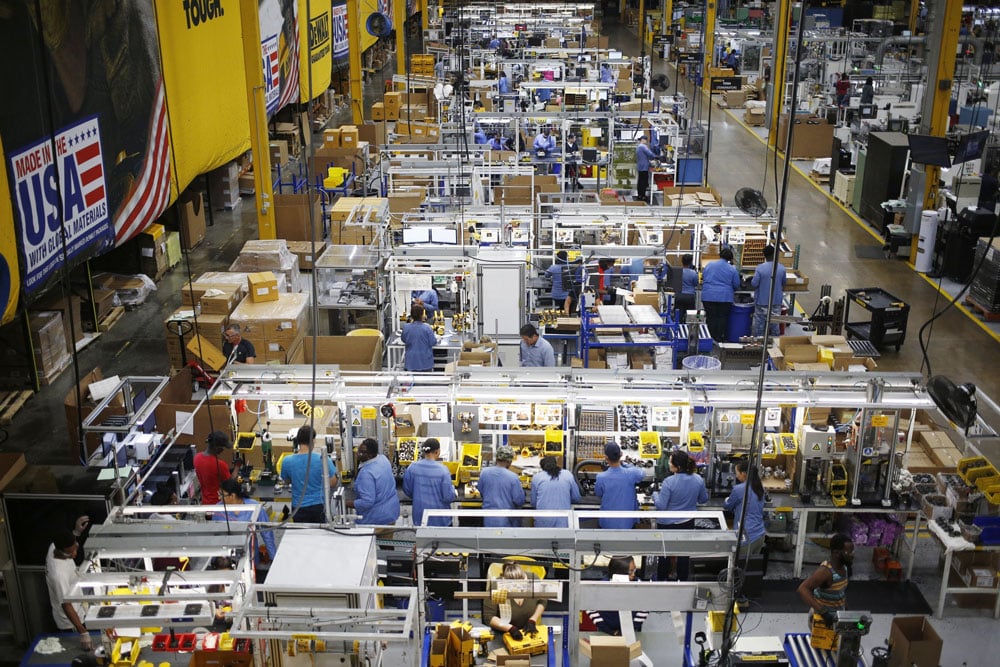The economic landscape is changing on a daily basis and, with it, the workforce. Today, more than ever, hourly workers are looking for jobs that enable flexibility. Not all flexibility is created equal, and furthermore, how are you supposed to implement it at your facility?
With flexibility as our foundational value, MyWorkChoice embodies it by being the workforce solution that takes an imperfect workforce and builds a reliable staffing model using technology and 30 years of first-hand knowledge of the industry. Let’s walk through four sites that have been successful in implementing flexibility and overcoming a variety of workforce obstacles.
1. The worksite that demands consistency and skill
Challenge:
Our first partner example is in manufacturing. It required some light assembly, nothing too difficult, but does need some training (as little as 60 minutes) and the worker gets more efficient over time. Additionally, to make this staffing matrix more complex, each team must be composed of 13-people. It cannot have any gaps or the entire operational chain will not work.
The worker pool was devolving at this site with employees jumping from recruiting agency to recruiting agency in order to ensure their schedule needs were accommodated. This resulted in a 60% FULFILLMENT rate. Not good.
Solution:
MyWorkChoice had the infrastructure to create a multi-tiered approach in the workforce. We created a worker pool composed of:
- Full-time Skilled (Looking to get 35+ hours consistently)
- Fill-in Skilled (10-20 hours a week)
- Part-time flex w/ no experience required (Want to dabble)
Within the first 90 days, we created this modern model that was composed of 342 people to cover 150 FTEs over two 5-hour shifts. This enabled complete coverage but did not demand “exactness” for an individual or have a minimum requirement of hours. Moreover, we were being asked to maintain this pool of workers and not add anyone new starts to the mix. We ran for six months without adding a single person (or losing anyone) and maintained a 97% fill rate. To this day, we maintain a 93% Fill Rate consistently for the past THREE YEARS.
2. The worksite that has long shifts and seasonal peaks
Challenge:
This partner runs an assembly plant and is very dependent on seasonal needs. At times 1,500 people are needed, others, only 300. On top of that, this job requires a 12-hour shift. Twelve hours of standing, equipment operations, light assembly, and shipping. Twelve hours of anything is long. It was difficult to generate interest let alone commitment to that schedule.
Solution:
Break up the shifts. This seems like a very elementary solution, but sometimes the best solutions are the simplest. People were willing to do the work, just not for that many consecutive hours. There were even some still WANTING to work 12 hour shifts but they wanted the option to work only 6 when needed. That mental shift in being the one to “choose” hours and length of day makes all the difference to an employee. It’s a simple and free benefit to offer but can make a massive difference in work performance and retention.
With that in place, we created a dedicated full-time monthly schedule along with a contingent fill-in community. This fill-in community enabled the full-time monthly folks to take off when they wanted (up to 5 days a month). It keeps everyone working the amount they choose and keeps morale high. It enables the creation of a pool of workers to dial-up and dial-down depending on seasonal needs and not have to constantly launch into costly new recruitment campaigns and training hours.
Quote “Hey, we have someone that gets to pick their shift. They’re going to choose what they’re going to work for us. They’re going to show up for that shift.”
3. The worksite that is repetitive and un-engaging
Challenge:
Picking and packing for 8-hours straight, for an unattractive pay rate. This is a no-frills job and the workforce just didn’t want to do it. The client hired over 10 staffing companies to try to keep up with the churn and burn of employees. Since the job is easy and minimal training is required, this worked, but was very expensive.
Solution: Make this job appealing. How? Tout what it is – something simple and a very easy way to make money. Cut the shifts into 4-hour blocks where the monotony can be more bearable for a wider range of people. Then, expand your target workforce and recruit those that want a low-commitment, meditative opportunity; like stay-at-home parents, retirees, college students. The exact workers who are more inclined to take an opportunity that compliments their lifestyles.
Quote “When I look at the workforce that they’re bringing in, we’re seeing a really different demographic that we’ve never seen before in our facility. We’re seeing veterans, retirees, moms, and dads and a lot of college students coming in.”
After 8 months, we achieved a consistent 103% fill rate.
4. The worksite that has unappealing conditions.
Challenge:
This client, on paper, is the hardest sell. It’s a heavy production environment, 12-hour shifts, complex training. Workers have to commit to a mandatory 48 hours a week which includes mandatory weekend obligations as well. Needless-to-say, they were suffering from huge turnover. On top of that, these were permanent roles and they were not using a staffing agency. Retention bonuses weren’t working and people were churning workers like crazy. They were hitting multiple roadblocks as the workforce today just does not want to accept this restrictive situation.
Solution:
We had to prove our flexible model works. Not only were they skeptical of the staffing agency model, they weren’t convinced that our modernized model would work either. We took a very strategic approach to this operational shift. First, we took over the exit interviews and talked to those who were quitting. At one point in time, these people wanted the job. Our assumption was that they quickly burnt out, but we needed the data. Our conversations proved that theory.
We offered 6-hour shifts, the option to work only 24-hours a week and the ability for them to still get hired on full-time directly with the company if they wanted to progress in their career. The foundation of our employment pool was filled from this subset of former plant workers and we were able to recapture a huge majority of previously trained and valuable employees.
We then continued to build out our pool of talent. The amount of work needing to be done hadn’t changed, but we could change how many people could help get it done.
As soon as we started attracting other permanent workers wanting the flexibility benefits that we offered, the client issued a performance challenge. Could our workforce, with it being broader, keep the performance standards? Yes. In fact, our workforce outperformed their regular workforce. It was simple- our workforce was much more efficient because they were less burned out and happier employees. More good news for this client, because of an improved morale and mental state of their workforce, they worked safely and yielded a lower injury rate. The data proved our model was successful, and this has resulted in us managing their entire workforce recruitment and onboarding process.
In summary, we provide a Workforce as a Solution (WaaS)
We are not just another software company or app trying to sell you scheduling features or access to a job board. We are a Workforce as a Solution company (WaaS) providing the technology and W-2 talent along with the infrastructure to hire, fire, onboard, and schedule.
At the end of the day, we are giving the worker, both full-time and fully flexible, autonomy and control over their schedules…Ultimately, crafting a stronger workforce. Hourly workers want to be able to tend to their sick child, bring their elderly neighbor to a doctor’s appointment, or take a day for mental health when needed. Employers are now seeing the value in implementing a truly flexible model. MyWorkChoice provides the ability and peace of mind for this to occur – for both the worker and employer.





